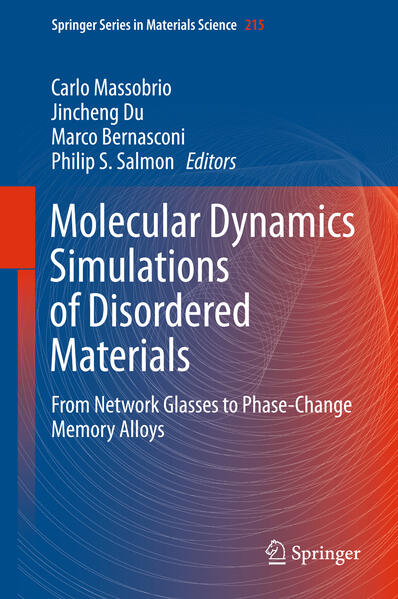
Zustellung: Sa, 19.07. - Mi, 23.07.
Versand in 7 Tagen
VersandkostenfreiBestellen & in Filiale abholen:
This book is a unique reference work in the area of atomic-scale simulation of glasses. For the first time, a highly selected panel of about 20 researchers provides, in a single book, their views, methodologies and applications on the use of molecular dynamics as a tool to describe glassy materials. The book covers a wide range of systems covering "traditional" network glasses, such as chalcogenides and oxides, as well as glasses for applications in the area of phase change materials. The novelty of this work is the interplay between molecular dynamics methods (both at the classical and first-principles level) and the structure of materials for which, quite often, direct experimental structural information is rather scarce or absent. The book features specific examples of how quite subtle features of the structure of glasses can be unraveled by relying on the predictive power of molecular dynamics, used in connection with a realistic description of forces.
Inhaltsverzeichnis
From the Contents: The atomic structure of network forming glass systems. - First-principles molecular dynamics methods applied to glasses. - Computational Modeling of Glasses: A QSPR perspective. - Novel methods for modeling network glasses modeling of silicate liquids. - The numerical challenge of sampling the energy landscape and the long-time dynamics of amorphous networks. - Topology and rigidity in connection to the understanding of the atomic structure of glasses. - Network modeling in variable dimensions.
Produktdetails
Erscheinungsdatum
05. Mai 2015
Sprache
englisch
Auflage
2015
Seitenanzahl
552
Reihe
Springer Series in Materials Science
Herausgegeben von
Carlo Massobrio, Jincheng Du, Marco Bernasconi, Philip S. Salmon
Verlag/Hersteller
Produktart
gebunden
Abbildungen
XIX, 529 p. 263 illus., 212 illus. in color.
Gewicht
986 g
Größe (L/B/H)
241/160/35 mm
ISBN
9783319156743
Entdecken Sie mehr
Bewertungen
0 Bewertungen
Es wurden noch keine Bewertungen abgegeben. Schreiben Sie die erste Bewertung zu "Molecular Dynamics Simulations of Disordered Materials" und helfen Sie damit anderen bei der Kaufentscheidung.










